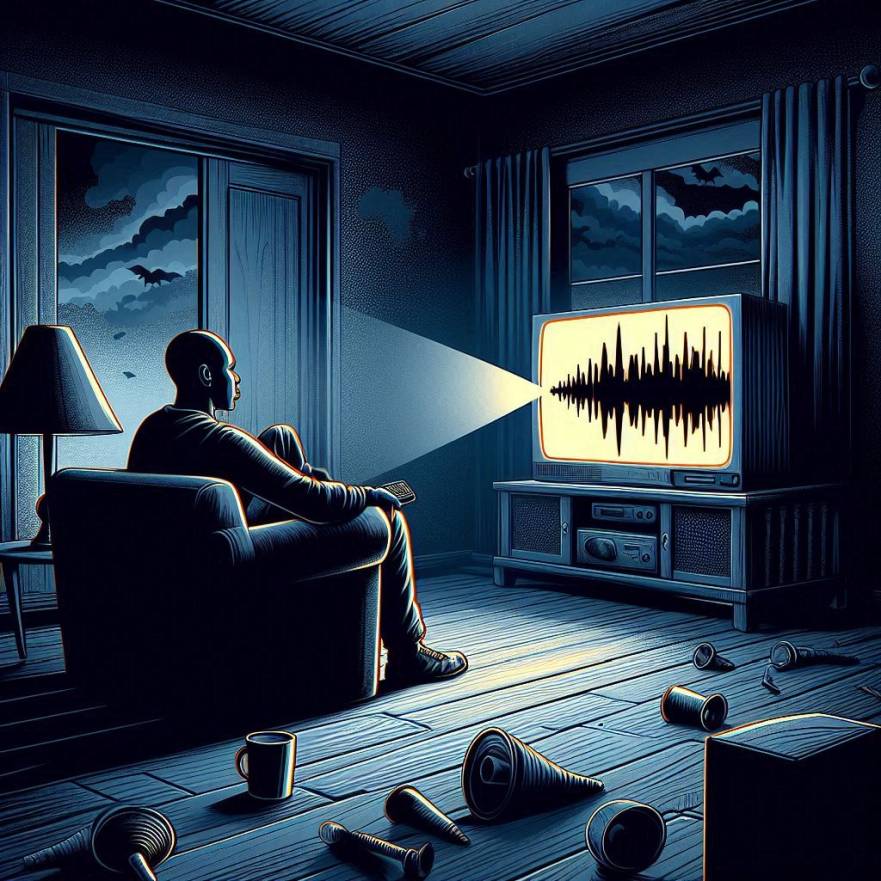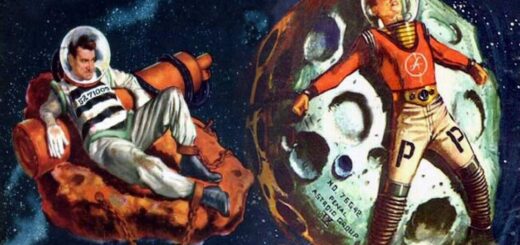Brain Raid by David Margolin

Brain Raid by David Margolin
Chapter 1: Loud Enough to Wake the Nearly Dead
The brain-raid alarm started softly and dimly, but quickly crescendoed into a sensory bombardment that was ear-splittingly loud, and blindingly bright. WARNING–LOW NEURONS! frantically alternated with EMERGENCY—REFILL NOW! over its powerful speaker and on its small but intense display screen.
To the casual observer Dr. Raymond Harris, an unusually fit 45-year-old man of medium height, with bright blue eyes, and an enviable amount of black hair flecked with gray, was peacefully enjoying a late Saturday afternoon nap in his home-office recliner. In reality, he was suffering a massive brain attack. This was no garden-variety stroke or seizure—most of his neurons had suddenly evaporated.
An instant before he fell into permanent mental oblivion, the racket from the frantically- screaming-and-flashing neuronal monitor implanted in his left arm snapped Raymond into action. Thanks to countless brain-raid drills, his next movements were automatic and lightning fast. He snatched the pre-filled neuronal nebulizer out of his shirt pocket and inhaled deeply. The emergency dose of 500 million neurons roused him to full consciousness. Breathing a sigh of relief, he thanked God for having survived this event, but when would the next one occur?
Raymond rubbed his aching left forearm around the display screen of the still-hot alarm. These “brain raid” attacks, formally known as Idopathic Neuroevaporation Syndrome (INS) were happening more and more frequently around the globe. The rapidity of the brain damage was unlike any other disease. It wasn’t gradually progressive, like Alzheimer’s disease, or Parkinson’s disease—it was instantaneous.
With all of the global resources that had been poured into discovering the cause, why were there still no answers? Raymond was racing the clock. This was his fourth major attack, and there was no record of anyone having survived a fifth one.
As Raymond gradually tuned back into his surroundings, the framed photo sitting on his desk caught his attention. It always made him smile. Raymond had his arm around his wife Eleanor. Their three children, Ethan age 5, Sarah age 8, and Luke age 12, were lined up, looking happy and relaxed. He shuddered at the thought of Eleanor having to raise these three precious kids alone.
Chapter 2: Toothpaste, Vitamins, & Neurons
When Raymond stepped out into the gray skies and drizzle of the fall afternoon a couple of hours later, he was still feeling woozy from the brain-cell roller-coaster ride. He splurged and took a private air-shuttle to CNS, the city’s largest pharmacy chain, and the only one with one-stop neuro-replenishment services. As always, as soon as the giant gaudy CNS marquee came into sight he enjoyed his private joke–imagining that instead of the official corporate name, Cosmetics and Nutrition Supplies, CNS stood for Consumerism Never Stops.
Raymond explained to Nancy, the pharmacist on duty, why he was requesting his monthly allotment of neurons 12 days early. Nancy replied, “You were lucky this time. You almost didn’t make it! We are having a sale on neuronal monitors that have programmable alert levels. They are safer than the fixed-count alert model that you currently have implanted. If you buy one today, we will install it and remove the old one at no additional charge.” Nancy’s commercial was delivered loudly enough for all of the customers in the vicinity to hear. Raymond glanced over at the nearby sign that read, “WE VALUE PATIENT CONFIDENTIALTIY” and then glared at Nancy, but her facial expression of wide-eyed eagerness at the anticipation of a sale did not budge.
After four brain-raid attacks, most of Raymond’s neurons were replacement neurons. They tended to wear out at a much faster rate than original neurons. He couldn’t waste his time and precious neurons listening to a sales pitch. “I’m not interested in any alarm upgrade, just give me my maximum allotment,” Raymond stated sharply.
“Very well,” Nancy relented, “have a seat in the red chair, Dr. Dreason has two implants ahead of you.”
Chapter 3: Where have all the Doctors Gone?
A couple of weeks later, when he arrived for work at the Advanced Neuroscience Institute, Raymond felt a chill go down his spine as he realized that the consequences of INS were becoming more and more obvious. He no longer had to circle the building looking for a parking space and only a few seats in the large lobby were occupied. About a third of the entries in the lobby directory had the practitioner’s names and holographic images turned off. The darkened entries were like tombstones for colleagues who had fallen victim to INS.
Raymond entered the zero-gravity lift for the ride to his office on the 151st floor. Dr. Seth Robertson, head of the Advanced Neuroscience Institute whooshed in behind him. Dr. Robertson was movie-star handsome, and moved with the power and grace of a top athlete. Intellectually gifted, he had authored over 200 scientific articles. He was also an innovator, having started the neuron bank at the institute. He led by example, regularly donating his neurons to the bank. Many practitioners at the institute, including Raymond, had been beneficiaries of these donated neurons. Seth and Raymond exchanged quick head nods. As usual, the nods were respectful, but when they made eye contact Seth immediately looked away.
As he exited the lift, Raymond’s thoughts turned to the work at hand. He had a full schedule of patients that day; he hoped that his neurons were up to the task. Raymond’s mood immediately lifted as he entered his office. He relished the doctor-patient relationship and thrived on the expressions of gratitude and small personal gifts, such as hand-crafted greeting cards and homemade pastries, that he frequently received from patients.
After seeing three new patients, Raymond started reviewing the stack of the holographic brain, spine, and synapse scans that had accumulated over the last week. After about 20 minutes of scrutinizing the images on his computer, Raymond realized that his thinking was slowing down. It wasn’t just his almost-inevitable post-lunch nap coming on. He was having trouble finding words and constructing sentences as he attempted to dictate the brain-scan reports. Raymond realized that his replacement-neurons, much less durable than his original ones, were failing him. As he took the first deep breath from his neuronal nebulizer, he resolved to find a more permanent solution to this modern-day plague that was breathing down his neck.
Chapter 4: Not on the Menu
Despite the boost of legal neurons in his office, Raymond was still feeling unfocused, distracted, and inefficient–as if his brain was encased in plastic. He had about two weeks to go before he could purchase his legal monthly allotment of neurons at CNS. “Time to visit Leonard,” he thought. Taking his lunch break a half hour early to allow enough time to accomplish his plan, Raymond found Leonard at his usual post outside the main cafeteria entrance. Leonard’s official position was sergeant on the institute security force, but his main source of income was trading in illicit neurons.
“Hi Leonard”
“Hi Doc,” Leonard replied nonchalantly.
Switching to code, Raymond asked, “Any good desserts today?”
“Yeah Doc, The apple pie is good, but they don’t have any out right now. Would you like me to bring you a piece when they put out some more?”
Fifteen minutes later, in Raymond’s office, he and Leonard were making the agreed-on exchange; a nominal 200 million cryo-canister of illegal neurons for 10,000 Medicoins. That cryptocurrency was the favorite for these illicit “brain-barter” transactions because they were designed to be used for purchasing medical services, and patient confidentiality laws prevented the government from tracking these transactions.
Before returning to seeing patients Raymond loaded the neurons into his nebulizer and breathed in deeply. Raymond felt at the top of his game when he started taking the medical history from his next new patient. He thought about how much he loved practicing neurology and how horrible it would be to lose the mental capacity to do so.
Chapter 5: You Can’t Unsee It
“Good news, I’m home.” Raymond offered his standard greeting as he passed through the home-security portal. He hoped he was accurate in assessing Eleanor’s welcome-home hug as being a little more passionate than usual. After 12 years of marriage Raymond and Eleanor were no longer in a fever, but their relationship was in good shape.
After a leisurely dinner, Raymond and Eleanor played a few games of Chinese Checkers and a round of RACK-O, accompanied by a glass or two of vino blanco. Growing increasingly amorous, Raymond gently stroked Eleanor’s well-toned bare arm and looked into her eyes, “You look gorgeous,” he heard himself saying. Her fragrance was familiar and unique–clean, like fresh laundry, with just the right amount of fabric softener. He traced the shapely contour of her hip with his right hand as they wordlessly made their way into the bedroom. Raymond was enjoying the experience, and the accompanying erection, until a mental discomfort crept into his consciousness. He grimaced as he gradually realized that there was something fraudulent about the experience. He had a sense of unreality and detachment, but different than a dream. He realized that he was remembering things that had happened in the past, not experiencing them as they were happening.
Raymond’s eyes widened, and beads of perspiration formed on his forehead as he forced himself to tune in to his present surroundings. He saw that he was still sitting at the game table with Eleanor! She was patiently waiting for him to play his next RACK-O card. “Everything OK?” she inquired worriedly.
Raymond managed to get out an unconvincing “A-OK,” while he ran through the differential diagnosis to explain this bombshell of an experience: temporal lobe seizure disorder, late-onset schizophrenia, dissociative disorder, hypnagogic hallucination. Then it hit him with horrifying certainty. His throat tightened and his pulse raced as he realized, Christ, it must have been that bolus of illicit neurons I took this afternoon. They weren’t properly neutralized—I was ‘remembering’ someone else’s experience with Eleanor–I just had second-hand sex with my wife! But whose memories were they? That question kept him awake for most of the night, as he struggled to suppress vivid thoughts of other men in bed with Eleanor.
Chapter 6: Friends in the Right Places
The next morning, Raymond took a self-prescribed longer-than-usual hot shower to help recover from the night before. Partially revived, he accepted the early morning biocell phone call by blinking his left eye. As usual, Arthur Pebold’s voice was warm and reassuring, but the mildly scolding tone was uncharacteristic, “Raymond, how come I had to hear from Eleanor that you had a fourth brain raid attack? You must be terrified.”
“Well, just because you are my priest and best friend doesn’t mean that I have to come running to you with every little problem.”
“Raymond, no doubt you have heard the name Ira Kunsler?”
“That’s like asking a priest if he has ever heard the name Jesus.”
“I’m glad to see that your problems haven’t dampened your irreverent sense of humor. You might know that he is a M.I.T. Professor of Theoretical Neuroscience and Applied Neurotechnology, and one of the world’s leading researchers in the cause and treatment of INS, but you didn’t know that he owes me a big favor. Forgive my lack of discretion, but I told him about your situation. Be at his office at 4 p.m. today—he will tell you the rest.”
The effect on Raymond’s office schedule was murder, but at 4 p.m. he was sitting in Dr. Kunsler’s office in the Brain and Cognitive Sciences Building on the sprawling M.I. T. campus. It took Dr. Kunsler about 20 minutes to explain the technique that he and his colleague, Dr. Faith Henderson, were experimenting with. “There are two components, one is in your brain and the other is in the cloud. We build a network of 64-billion synthetic neurons and install them into your brain; there is plenty of room next to your natural neurons. The synthetic neurons don’t need to be neutralized because they’ve never learned anything. We continuously digitize your memories as you form them and upload the information to the cloud. The synthetic neurons are inactive unless your natural neuron level plunges. If that happens the system instantaneously downloads your memory store into the synthetic neuronal network.”
Raymond had been aware of experiments with non-human primates, but was surprised that technology had advanced to the level of human trials. As he read through the 47-page consent form, Raymond slowed down when he came to the possible adverse events section: “This procedure has been through pre-clinical testing in animals, including non-human primates, but it has never been performed in humans. If the storage and transfer of your memories is not perfect, there could be side effects, including a sense of unreality, difficulty recalling when events occurred in time, false memories, and memory gaps.” Sobering, but with the constant threat of an almost certainly unsurvivable fifth brain raid attack hanging over his head, he felt that he had to take the risk.
After Raymond looked up from the consent form Dr. Kunsler asked gently, “Any questions?”
“Not about this program—you are right about my motivation–I’m on board, but I do have a question.”
Reluctantly, Raymond told Dr. Kunsler about the second-hand experience of making love to Eleanor, hoping for any explanation other than her having cheated on him.
“I’m glad that you asked. More likely than not that was an episode of detached auto-recollection, a rewind of a prior experience. It isn’t uncommon in post-INS patients. Somehow the neuronal depopulation and repopulation depersonalizes the memory of the event. People remember what happened, but not that they were part of it. That is a much more likely explanation than your having boosted the neurons of someone who had sex with your wife—think of the odds.”
“That makes sense, Dr. Kunsler,” said Raymond, feeling quite a bit relieved, and ashamed that his emotions had overridden his logic and objectivity.
“I will arrange for you to have the procedure in our research lab at Mass General. It will be within the next couple of weeks. After the procedure we will track your location 24×7. You will literally be a very valuable citizen, carrying around a small fortune in research dollars inside your cranium.”
Chapter 7: Into the Danger Zone
Twelve days later, Raymond walked out of Massachusetts General Hospital with 64 billion synthetic neurons implanted in his brain. He was scheduled to have a series of visits at the Kunsler-Henderson lab at MIT to have the connection between those neurons and the cloud memory storage fine-tuned. Raymond realized that his thoughts were dominated by neurons– acquiring them, losing them, and in his dreams literally chasing after them. As a diversion, he and Eleanor decided to watch a movie in a theatre for the first time in years.
They were excited to see “Mission Impossible-Dead Reckoning Part 14,” the first movie to be filmed on Mars. They were enjoying digging into the popcorn topped with minus-100-calorie butter. He thought about the synthetic neurons in his brain. He hoped that he would never need them, but knowing that they were there allowed Raymond to filter out thoughts of impending neuronal doom. He was enthralled as Tom Cruise-III, doing his own stunts, leaped over the replica of the Empire State Building on his hydrogen-propelled rocket cycle. “Life is good,” he thought.
Eleanor was enjoying the action and trying to keep track of the convoluted plot, but previously suppressed thoughts about INS and her relationship with Raymond began surfacing. Until now, she hadn’t let herself think about how worried she was about the INS attacks. How much had they changed Raymond? Could he tolerate even one more attack? Were Raymond’s memories being stored properly in the cloud? Would they download successfully? Were the synthetic neurons up to the task?
The next line of thought totally eliminated Eleanor’s ability to focus on the movie. How had she let herself have the affair with Seth? She should have been able to resist the temptation, no matter how charming and gifted he was. A jolt shot through Eleanor’s chest as she thought, “What if Raymond received some of Seth’s neuronal donations that carried memories of our affair?”
As she was torturing herself with that thought, something subliminal drew Eleanor’s attention to her husband’s face. He was staring at the movie screen, but his expression was blank, and he had stopped eating his popcorn. Raymond didn’t notice Eleanor’s worried expression. His mind was elsewhere. More accurately, it was nowhere. He was in the void caused by massive neuron loss. In the next instant, a wisp of a sound, more inaudible than audible, was edging its way into his consciousness, and shaping into a word, W-A-R-N-I-N-G…
* * * * THE END * * * *
Copyright David Margolin 2024




Terrific sci–fi. I laughed at the barbs levied at drug stores, films and addiction. Well done.
Very gratifying comments, Bill. Thanks for your close reading.